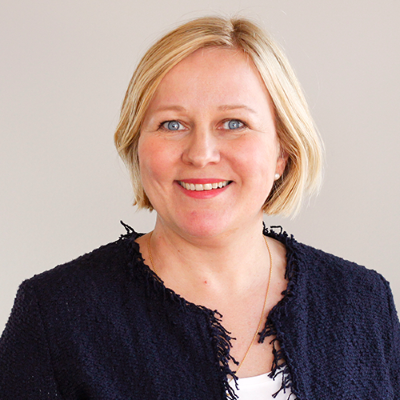The US 10-year interest rate rose by 25 basis points in the quarter, while the German 10-year yield was up around 40 basis points. Furthermore, the USD depreciated by 2.9 percent versus the EUR, while the JPY depreciated by 3.4 percent.
A volatile year
Up until the autumn, long-duration was a good investment. A weaker economic outlook, lower inflation expectations and dovish central banks all put downward pressure on long-term interest rates. Since the turn of the year, the 10-year interest rates in the US are down 75 basis points and German rates are down 43 basis points.
Manufacturing cycle turnaround?
In 2019, global growth slowed, mainly due to a weaker manufacturing sector. In the fourth quarter, there were some signs that the manufacturing cycle was turning. Manufacturing PMIs improved, in particular in China. The German manufacturing PMI, which has been the biggest worry, also showed some improvement, albeit from a very low level. These early signs of a turnaround contributed to the strong performance of risky assets in the fourth quarter.
Despite a weaker manufacturing sector during 2019, labour markets remained solid. Unemployment was low and households optimistic, which is an engine for further growth in consumption. This was confirmed by the Purchasing Manager Index (PMI) for the service sector, which held up well.
The gap between the PMIs for the service and manufacturing sectors has been very wide during the year. The big question for future growth is whether the weak manufacturing sector will eventually pull down the labour market and service sector or whether the strong service sector and households will lead to growth in manufacturing. The latest improvements in manufacturing PMIs bode well for the latter scenario.
Trade and Boris
In addition to hopes of a turn in manufacturing, progress in trade talks and the hope of an orderly Brexit also contributed to the strong market performance in the fourth quarter. There seems to be agreement over a “phase one” trade deal and Trump has said he will sign the agreement in January. Progress in the Brexit talks and the Conservative victory in the Parliamentary Election in December have reduced the chances of a hard Brexit, which in turn reduced uncertainty and contributed to strong markets at the end of the year.
Central bank stimulus
Most central banks are currently taking a dovish stance. The Federal Reserve cut the rate at its October meeting, and the markets are now expecting the Fed to keep the rate unchanged or cut once more. The ECB kept its rate unchanged in the quarter, but restarted quantitative easing (QE) in November.
Norges Bank and the Swedish Riksbank went against the tide and increased interest rates in the autumn. Norges Bank increased the policy rate for the third time in 2019 in September and Riksbanken increased the policy rate for the first time since December 2018. Both central banks are expected to keep rates unchanged for the foreseeable future.




